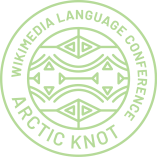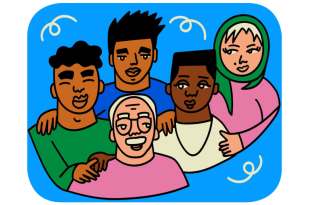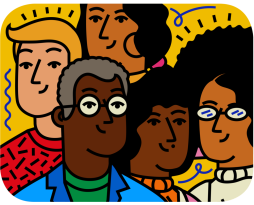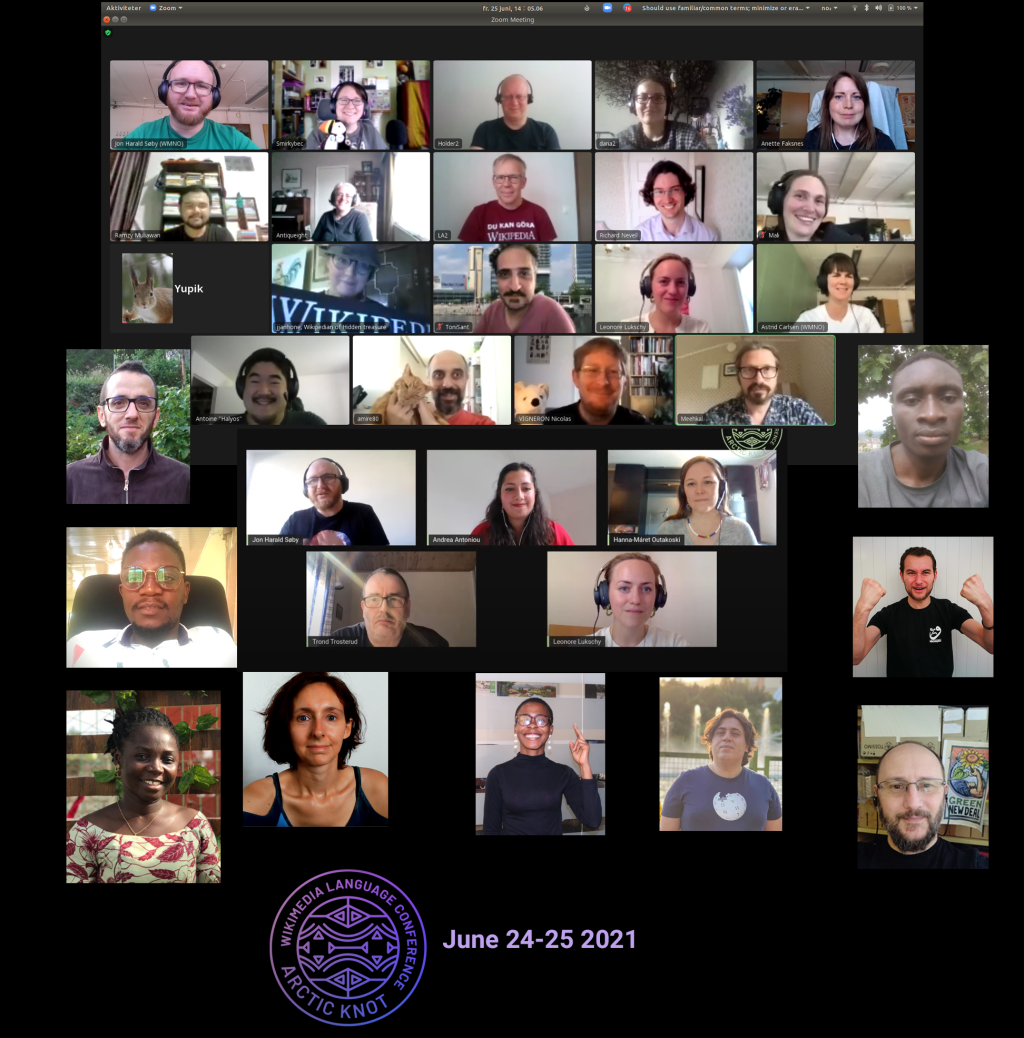The Arctic Knot Wikimedia Language Conference happened 24th–25th of June, after 6 months of planning. Our wish was to indulge the participants in a true Arctic adventure in the city of Tromsø, Norway. For reasons we all know, instead of midnight sun and overly expensive food, we got a global online get-together of enthusiastic, knowledgeable, curious Wikimedians, both experienced and new.
While the swag is on its way to the diverse crowd from all over the globe, we wish to sum up the top six lessons learned from the conference. Some of these we handled well from the beginning, but most of them we spent time figuring out how to do. Hopefully our experience can be helpful for you too!
Quick summary
- Use existing structures if possible
- Focus on the community
- Outsource
- Create a balanced program
- Find ways to automate what can be automated
- Document the participants
1. Building on an existing structure leaves more energy for the fun parts
Arctic Knot is a part of the Celtic Knot conference series. With five years of conferences, the last one being digital, we could build on a lot experience from the Wikimedia UK and Wikimedia Deutschland teams. Thanks! Some of the things that were absolute gold for us were:
- Pre-made spreadsheets, that we could adjust, instead of creating them from scratch ourselves
- Access to their lessons learned from previous conferences
- The privilege to have regular check-ins with experienced conference organizers
If you are organizing a conference for the first time, maybe there are other conference teams that can offer some sort of support for you?
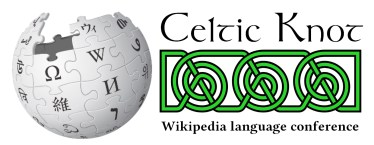
2. Ways to build the community
Community building is basically a tool for creating a safe space to network, exchange experiences and gain more friends with the same interests. In the Arctic Knot crowd we knew there would be many experienced Wikimedians and Wikipedians. For us it was important to create a space where it felt comfortable and easy to reconnect with old friends and also to build a network with new people. Sticking to a selected few communication platforms (Telegram and YouTube comments), and being constantly present, and an active part also in the more informal conversations was important and rewarding.
On the other hand, building a community is also about building a frame for the community and give people some images and colors to associate with the event. We engaged designers with roots in the Sámi community to create a nice logo for the conference. We spent time putting as much Arctic into it as we could through design and image use. We used the logo and the name actively in all our communication to enforce this sensation of an Arctic Knot community. And the icing on the Arctic cake was using reindeers as entertainment in the breaks. Click here for some reindeer-zen.
3. Outsource!
There will be challenges, and things will never go as planned. We chose to outsource things we were most nervous about, and that could easily be outsourced. We also outsourced demanding tasks that we could see would reduce our productivity. To be able to do that, you have to be really honest with yourself and the team, so you are not stuck with tasks that are boring, while you have outsourced all the fun. However, what you find overly demanding, might be what someone else find fun!
Our two main helpers for the conference lifted the work they did to a level we would never have reached by our selves. In the end outsourcing gave us more than we bargained for – that is also a nice lesson learned!
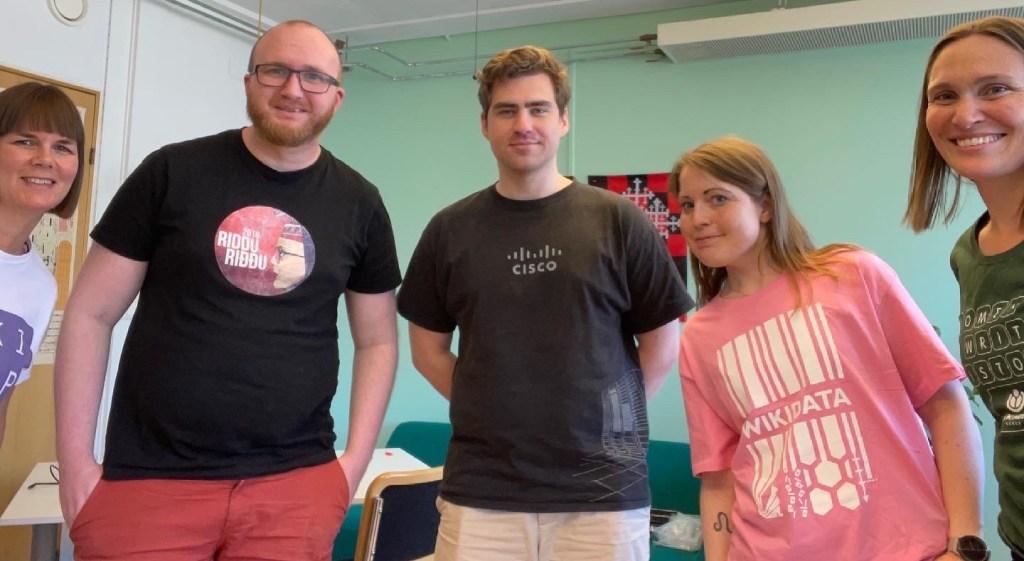
4. Balance the program
We are a community of amazing people doing amazing things, and we wanted to include each and every submission that came our way. Tough decisions had to be done. To make it easier to set up the program, we started thinking on taking the participants on a journey: starting with an overview of Sápmi and gradually travelling deeper into specifics of the Wikimedia projects. The first draft of the program was merely headlines, to structure which type of content we wanted a which time to achieve this sensation of a journey.
Knowledge equity is very important for us, and for the Wikimedia movement. We believe having a diverse crowd on-stage, will make it easier to achieve a balanced crowd off-stage too. A balanced program is a program where men and women are represented equally, and where speakers come from a diverse set of cultural and regional backgrounds. For the panels in particular, we always looked for a 50–50 gender balance. To achieve a balance in the program, we started with the submissions that had come in after the calls for submissions had been announced. Putting them into the structure, we could see where the program was balanced, and where we wanted more diversity. By researching the topics, and actively inviting people to send submissions, we managed to get a well representation in the program for Arctic Knot. The gender balance among the participants were 60-40 men-women.
Among other things, we did ask the participants to share which languages they spoke. The result indicated that indeed, we did have a diverse and multilingual crowd. In particular, we found it interesting that Norwegian speakers were outnumbered by both Swedish and Dagbani speakers.
5. Handling the submissions
We were not fully prepared for all the work dealing with submissions and the communication with speakers. We spent quite a lot of time on individual communication and follow-ups. A lot of this can be automated using a dedicated submission platform, so if you are considering if to use one or not, we definitely suggest do it! We will go for that next time.
6. Document the crowd
The conference is on, and you are super-excited! It is so easy to forget to make a group photo! We would suggest to put taking the group photo into the conference program, and doing it on the day you expect most people to be present.
In addition registering some interesting fact about the participants, to present visually during or after the conference can also be a great idea. We did it with languages, and sharing the picture above sparked a lot of conversation and curiosity. Many started searching to find out about the different language codes, while others were expressing astonishment and enjoyment of being part of such a multilingual group.
We did not take the group photo early enough, so not that many were logged on when we did. Therefore we invited people to send in their photos after the conference. We gathered quite a lot of happy faces that way,and the photo really brings back that good Arctic Knot vibe.
On a personal level and as a newcomer to the movement, this was the first Wikimedia conference I was involved in. I was completely overwhelmed by the energy of the crowd. Maybe we were very lucky, because there was a group of 2–3 active chatters from the very beginning of the conference. They had an incredibly positive attitude, and in many ways I believe they set the tone for the informal conversations throughout the conference.
As an organizer, we can’t control the mood of the participants, so to conclude I wish to thank everyone at Arctic Knot for being so positive and enthusiastic. It was a blast hosting you, we look forward to one time in the future being able to invite you up north for some stunning nature, good conversation and maybe even seeing some reindeer live!
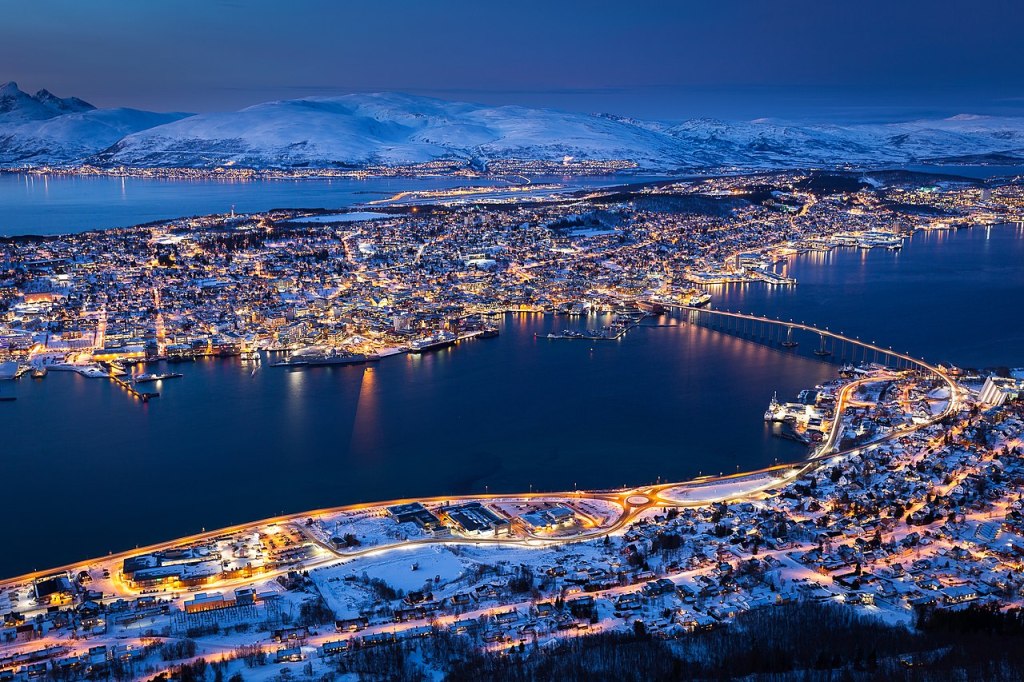
Svein-Magne Tunli – tunliweb.no, CC BY-SA 4.0 https://creativecommons.org/licenses/by-sa/4.0, via Wikimedia Commons

Can you help us translate this article?
In order for this article to reach as many people as possible we would like your help. Can you translate this article to get the message out?
Start translation
